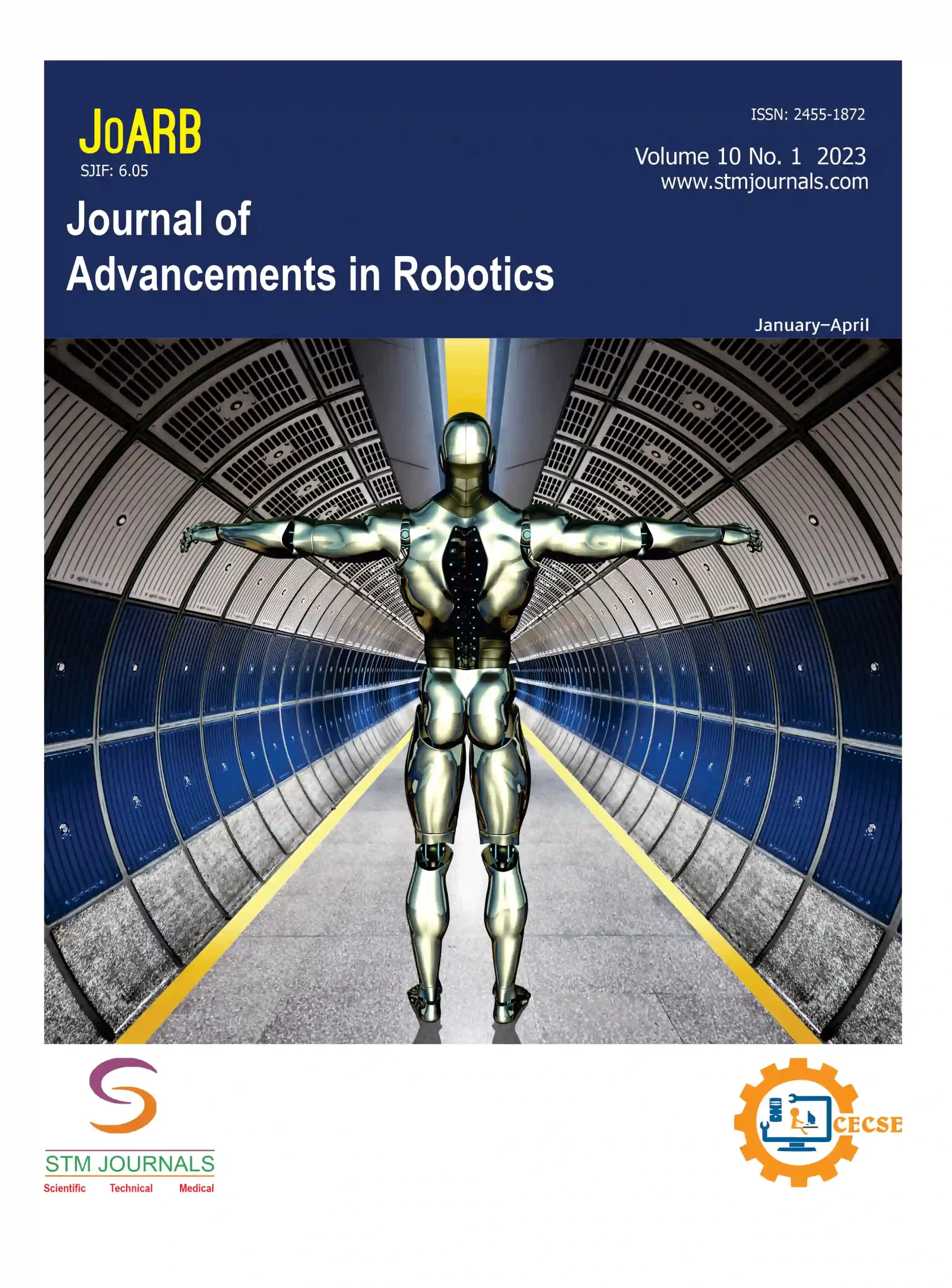
Narasimha Chary Ch,

CH.GVN Prasad,
- Associate Professor Department of Computer Science and Engineering, Sri Indu College of Engineering & Technology, Sheriguda Telangana India
- Professor Department of Computer Science and Engineering, Sri Indu College of Engineering & Technology, Sheriguda Telangana India
Abstract
Humanoid robots represent a swiftly advancing area of study and innovation, seeking to produce robots with traits and abilities resembling those of humans. These robots have diverse uses, such as aiding humans in different activities or exploring dangerous or inaccessible areas. Advancing humanoid robots entails combining cutting-edge technologies, including robotics, natural language processing, computer vision, and artificial intelligence. Combining computer science and engineering, robotics is an interdisciplinary subject of study. A subfield of robotics research known as “humanoid robotics” studies robots with human features that can imitate human behavior and intelligence. This study compares various humanoid robot versions that are already on the market and discusses recent developments in the field of humanoid robotics research. The problems and potential applications of artificial intelligence to complicated problem solving in humanoid robots are also briefly covered in this paper.
Keywords: Humanoid, robots, automated machinery, jumping pad, autism spectrum, dynamic moment primitives, gait, artificial intelligence, research, reinforcement learning
[This article belongs to Journal of Advancements in Robotics(joarb)]
References
- Hwang Y, Konno A, Uchiyama M. Whole body cooperative tasks and static stability evaluations for a humanoid robot. In: Proceedings of the 2003 IEEE/RSJ International Conference on Intelligent Robots and Systems (IROS 2003), Las Vegas, NV, USA, October 27–31, 2003. pp. 1901–1906.
- Wang J, Li Y, Qiu C. Analysis of dynamic stability constraints for a mobile humanoid robot. In: Proceedings of the 2008 IEEE International Conference on Robotics and Biomimetics, Bangkok, Thailand, February 21–26, 2009. pp.
- Yi S-J, McGill SG, Zhang B-T, Hong D, Lee DD. Active stabilization of a humanoid robot for real-time imitation of a human operator. In: International Conference on Humanoid Robots, Osaka, Japan, November 29–December 1, 2012. pp. 761–766.
- Trupthi M, Chary ChN, Sneha S, Prasad MH, Swathi K. LCDDF: an adaptive and learning based framework with feature selection for efficient detection of concept drift in data streams. Research Square preprint. doi: 10.21203/rs.3.rs-3893993/v1.
- Luo D, Han X, Ding Y, Ma Y, Liu Z, Wu X. Learning push recovery for a bipedal humanoid robot with dynamical movement primitives. In: 2015 IEEE-RAS 15th International Conference on Humanoid Robots, Seoul, South Korea, November 3–5, 2015. pp. 1013–1019.
- Chary ChN. Comprehensive study on multi-operator base stations cell binary and multi-class models using Azure machine learning. J Composition Theory. 2021; 14 (6): 1–11.
- HoffmanEM, Perrin N, Tsagarakis NG, Caldwell DG. Upper limb compliant strategy exploiting external physical constraints for humanoid fall avoidance. In: 2-13 13th IEEE-RAS International Conference on Humanoid Robots (Humanoids), Atlanta, GA, USA, October 15–17, 2013.
397–402. - Chary ChN, Krishna A, Abhishek N, Singh RP. An efficient survey on various data mining classification algorithms in bioinformatics. Int J Eng Tech. 2018; 4 (2): 1058–1063.
- Meng L, Yu Z, Chen X, Zhang W, Ceccarelli M, Hashimoto K, Takanishi A, Huang Q, Guo W, Xie L, Liu H. A falling motion control of humanoid robots based on biomechanical evaluation of falling down of humans. In: 2015 IEEE-RAS 15th International Conference on Humanoid Robots, Seoul, South Korea, November 3–5, 2015. pp. 441–446.
- Shobarani R, Sharmila R, Kathiravan MN, Pandian AA, Chary CN, Vigneshwaran K. Melanoma malignancy prognosis using deep transfer learning. In: 2023 International Conference on Artificial Intelligence and Applications (ICAIA) Alliance Technology Conference (ATCON-1), Bangalore, India, April 21–22, 2023. pp. 1–6.
- Samy V, Caron C, Bouyarmane K, Kheddar A. Post-impact adaptive compliance for humanoid falls using predictive control of a reduced model. In: 2017 IEEE-RAS 17th International Conference on Humanoid Robotics (Humanoids), Birmingham, UK, November 15–17, 2017. pp. 655–660.
- Prasad ChGVN, Vuna VV, Guptha KG, Reddy VNK. General framework factorization for context-aware recommendation of ecommerce on automotives. IJRDO J Computer Sci Eng. 2015; 1 (6): 1–9. doi: 10.53555/cse.v1i6.935.
- Saeedvand S, Jafari M, Aghdasi HS, Baltes J. A comprehensive survey on humanoid robot development. Knowledge Eng Rev. 2019; 34: e20.
- Kuo H, Tsai TN, Luan PC. CNN and LSTM based facial expression analysis model for a humanoid robot. IEEE Access. 2019; 7: 93998–94011.

Journal of Advancements in Robotics
| Volume | 11 |
| Issue | 01 |
| Received | April 8, 2024 |
| Accepted | April 11, 2024 |
| Published | April 22, 2024 |

